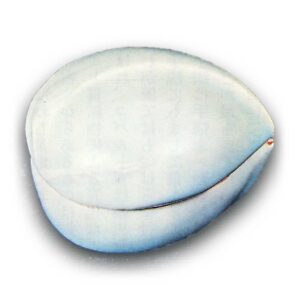
One of the Japanese classifications for Chinese celadon. The glaze is greenish-blue in color compared to tenryuji celadon, and more transparent than chikunin. The glaze has a strong luster, much like that of blue beadlo, and the amount of iron contained in the porcelain body is generally low. In addition, while Kinuta and Tenryuji ceramics generally lack penetration, Shichikan ceramics are generally characterized by penetration. However, the colors of what is now called shichikan celadon vary greatly. Chawan (tea masters) generally use the term “shichikan” to describe items that do not belong to either Kinuta or Tenryuji. The Manpo-Zensho classifies them as shichikan wari, shichikan gowari, enpo 4-nen wari, and enpo 5-nen wari, but there is no way to distinguish between wari in the 4th and 5th years of enpo (1676-, 7). The “Mingki Hishiroku” classifies them into three types: shichikan wari, shichikan chu wari, and shichikan shin wari, and says, “Shichikan wari. The “Seven Official Waters” are made in three different colors. The tools for this type of wading are various, but in general they are thickly made. However, the workmanship is good. Flower vases, incense burners, ornaments, lions, inkstone screens, and various other shapes and forms are all excellent old works. The seven officials are all from the same province. The color and workmanship are all different. There are various types of flower vases. The workmanship is better than that of the seven officials. However, the best of these is called Shichikan, and is also known as “Shichikan Shindo. The color workmanship is the same, but the workmanship is inferior to the middle. Various types of vases, tables, incense burners, inkstone screens, etc. were produced at this time, but they were of inferior workmanship. The origin of the name “Chil Guan” celadon is attributed to a Ming Dynasty official named Chil Guan, who was also known as the seventh highest-ranking official. Another theory is that the name “Qiguan” is a corruption of “Shunkan,” meaning “celadon porcelain with penetrations. Regarding the provenance and age of Qixian celadon, scholars generally agree that it was made from the Longquan kilns in China between the mid-Ming and early Qing dynasties.


